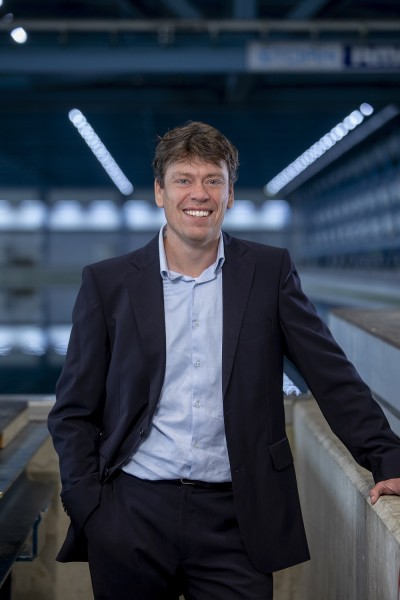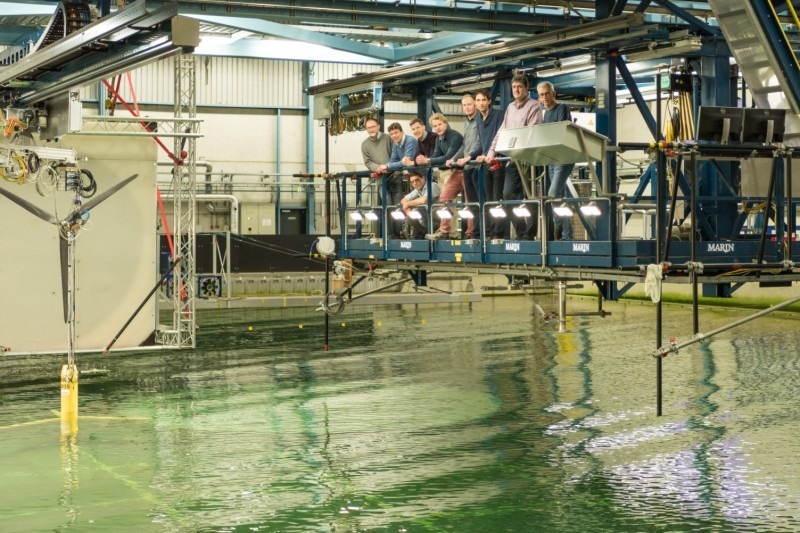 ‘ The main challenge is to further decrease electricity costs while increasing total capacity’
‘ The main challenge is to further decrease electricity costs while increasing total capacity’
MARIN believes it is our responsibility to contribute to the development of offshore renewable energy from waves, tides and wind. Back in 2010, we already established the Renewable Energy Team (RENT), a MARIN-wide team of specialists covering all the aspects needed to make offshore renewable energy a success.
Besides being active in wave and tidal energy, the RENT team is
involved in the hydrodynamic design of fixed and floating offshore wind turbines and wind turbine installation and maintenance vessels, for which the challenges are very similar to those of the offshore industry: a safe and economic design, enabling the highest productivity rates possible.
In the early days, the RENT team’s main involvement was in the area of wave energy and jack-up installation vessels for the offshore wind sector, explains Erik-Jan De Ridder, Team Leader RENT and coordinator for the Renewables market. However, this rapidly progressed to mainly focusing on offshore wind. “This was largely driven by the dramatic reduction in the costs of offshore wind energy, making it an affordable renewable energy source, especially for Northern Europe. The cost reduction was a result of economies of scale as the turbines grew from 2MW to the 12MW turbines of today, and secondly because the operational costs during installation and maintenance were lowered by introducing tailor-made installation and Operations & Maintenance (O&M) vessels,” he says.
Constant strive to reduce electricity costs
The main challenge for offshore renewable energy currently is to further decrease its electricity costs, while increasing its total capacity, Erik-Jan adds. Although the offshore renewable energy market can build on the knowledge from the oil & gas industry, it also has its own specific challenges, he says, such as the constant strive to reduce the cost of energy, but also the necessary scaling up so that it can be a major clean energy contributor to our overall energy need. “For this it will need to increase its capacity and going further offshore of course adds to the complexity of the operation. MARIN aims to keep on improving its knowledge and tools to support our clients with this development.”
Testing campaign for 15MW NREL turbine
For the first time in its history MARIN performed tests for a 15MW floating offshore wind turbine this year. “Additionally, we are working on projects related to novel control systems for floating installation vessels. To improve our tools and knowledge we work closely with our clients in research projects,” he comments. And this was the case for the 15MW NREL turbine, which was developed and tested in the ARPA-E Atlantis project called ‘scale model experiments for co-designed FOWT’s supporting a high-capacity (15MW) turbine’ led by Atkins.
To keep at the forefront of the latest developments in the offshore wind installation market, MARIN is now setting up the ‘Innovation in Control’ JIP. The objective of this project is to jointly develop a streamlined methodology for the development and evaluation of motion control systems on board (floating) installation vessels.


